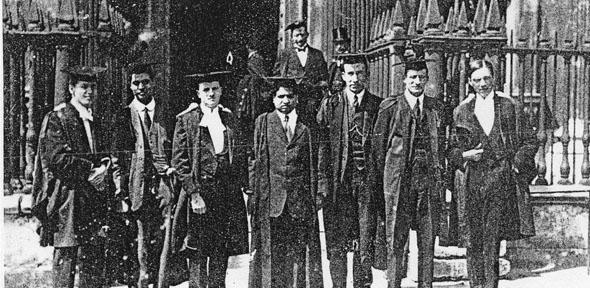Srinivasa Ramanujan
The Man Who Know Infinity

Ramanujan, who lived a short but very productive life, continues to be an inspiration for mathematicians across the world.
One of the most romantic and inspiring story in the history of mathematics:
- Srinivasa Ramanujan was born on December 22, 1887 in the town of Erode, located in Tamil Nadu.
- In 1904 Ramanujan left high school, his future looked promising and he had won the school’s mathematics prize and, more importantly, a scholarship allowing him to study at the Government Arts College in the town of Kumbakonam.
- At the beginning of 1907, at the age of 19, with minimal funds and a stomach all too often groaning with hunger, Ramanujan continued on the path he had chosen: total devotion to mathematics
- He is recognised as one of the greatest mathematicians of his time, but Srinivasa Ramanujan had almost no formal training in math.
- His mathematical knowledge developed, from main source of inspiration and expertise became "Synopsis of elementary results in pure mathematics" by George S. Carr.
- Also, he could afford only a small amount of paper, doing most of his work on slate with chalk, transferring a minimal amount of his working and his results to paper.
- At about the time Ramanujan entered college, he began to record his mathematical discoveries in notebooks.
- Ramanujan devoted all of his efforts to mathematics and continued to record his discoveries without proofs in notebooks for the next six years.
- He compiled 3,900 results (mostly identities and equations), before he lost his life at the age of 32. His infinite series for pi was one of his most celebrated findings.
- In 1919 he returned to Kumbakonam, Madras Presidency, and soon thereafter, in 1920, died at the age of 32.
- He was the second Indian to be inducted as a Fellow of the Royal Society, which is a Fellowship of some of the world’s most eminent scientists.
- One of the notebooks, known as the ‘lost notebook’, was discovered in the Trinity College library by mathematician George Andrews in 1976, and was later published as a book.
- In 1997 "The Ramanujan Journal" was launched to publish work in areas of mathematics influenced by Ramanujan.
"An equation means nothing to me unless it expresses a thought of God."
"I had never seen anything in the least like them before. A single look at them is enough to show that they could only be written by a mathematician of the highest class. They must be true because, if they were not true, no one would have the imagination to invent them."
For more information please visit Wikipedia page.